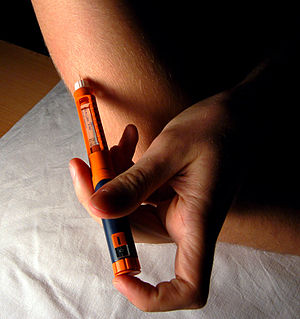
Nanotech is performing miracles on a lot of fronts. Now they’re using it to develop new ways to treat diabetes and even to monitor blood sugar without the painful blood-letting currently required.
This scholarly paper discussing new fronts in nanotechnology gives you an idea of the scope of the investigations. A quick rundown of the contents:
“…polymeric nanoparticles, oral insulin admin-istration using polysaccharides and polymeric nanoparticles, inhalable insulin nanoparticle formulations, and insulin delivery using BioMEMS [biomedical (or biological) microelectromechanical systems]. In addition to ceramic and polymeric nanoparticles, studies on gold nanoparticles for insulin delivery and treatment of diabetes-associated symptoms are discussed.”
I had to look up “polymeric,” so I’ll share. Polymeric just means made out of polymers, which are already in everything from synthetic plastics (your kitchen storage stuff) and other things we use every day at work and at home, to natural biopolymers (like in RNA, DNA and amino acids) that are critical pieces of our biological selves.

And here’s one about nanosensors that could selectively measure glucose concentrations. Glucose would alter the current flowing down the conductive nanotubes. That data would then be fed to an embedded microchip which would send it wirelessly to a wearable computer. The technology’s not there yet, though. They’re still working on making these things compatible with staying inside the human body for long periods of time – not a small problem.
And then there’s something that’s closer to becoming a reality. Put on the diabetic patient like a tattoo, a solution of nanoparticle sensor molecules reacts with sodium or glucose, creating “biomarkers”. Ultraviolet light makes the tattoo shine. They’re thinking they can use converted iPhones to make the light that’s needed. Though this probably won’t be a complete solution, it may help diabetes patients spot dangerous changes in between regular monitorings, according to an article on AZOnano.com.















